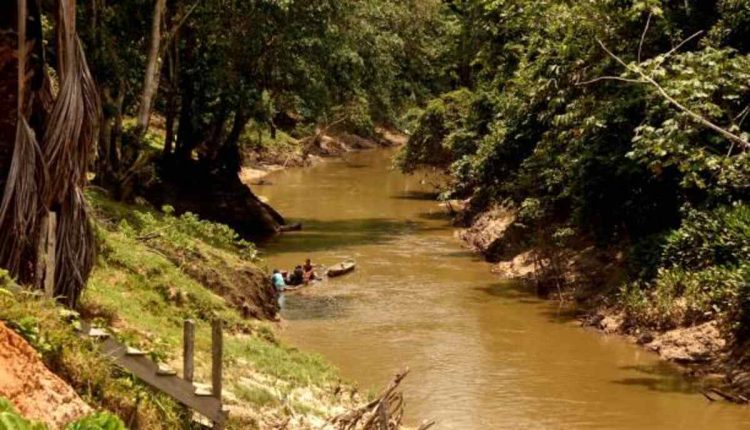Clarendon, Arkansas’ White River runs through it and can bring devastation. However, it also presents opportunities for economic development, recreation, and tourism.
Denise Parkinson’s book, Daughter of the White River, details Helen Spence’s betrayal aboard an old White River houseboat during the Depression era.
History
The White River’s meandering course creates an array of habitats, from its narrow, swift-moving headwaters to more expansive, slower stretches farther downstream. The watershed supports many species of wildlife, such as black bears and bald eagles. Fishing and hunting attract millions of visitors every year, while recreational boating and camping remain popular activities here.
Clarendon developed numerous industries along the river during its role as an essential transportation route during the 19th century, including lumber mills, stave and barrel factories, pearl markets, and the Moss Brothers bat company, providing professional baseball players with their high-quality bats during this period.
In the 1860s, Confederate forces under Brigadier General Joseph O. Shelby marched through the Cache River overflow bottoms and camped near Clarendon to prepare an attack against Union gunboat No. 26, known as USS Queen City, moored there on June 23, 1864; these attacks came from Confederates positioned along Clarendon’s levee and against gunboat 26 of its crew.
The lower White River provides heavy agricultural and commercial usage, particularly in the Arkansas Delta. Its fertile alluvial soil makes the river ideal for growing rice and other crops while serving as an essential barge shipping route between the Mississippi River and Newport.
Environment
White River’s diverse environment has sustained people and wildlife for millennia. Prehistoric bluff shelters were discovered along its banks while Native American tribes settled alongside it. European settlers eventually saw it as an invaluable resource and established towns such as Batesville, where its waters meet those of Ozark-St Francis National Forest; steamboat travel made this region accessible and had a vital effect on its development.
South of Batesville, the White River meanders and slows, accommodating barge traffic from Batesville all the way to Newport for 250 miles from Mississippi to Newport. A campaign by agricultural shipping and export company Bunge North America to deepen this waterway for barge navigation has met strong opposition from conservationists as well as U.S. Fish and Wildlife Service officials.
Alongside agriculture, the river provides recreational opportunities such as hunting and fishing – particularly duck hunting! Additionally, its tributaries serve as habitat for birds and wildlife, such as bald eagles who nest on its sandy banks.
In April 2008, the forested land surrounding tan and green buildings at the refuge took on a darker hue due to flood waters from muddy river waters. A series of levees protect it from floodwaters; however, in extreme flooding events, a portion of its 160,000-acre surface area becomes inundated by river waters, which flow past dams that create manmade lakes that generate hydroelectricity power.
Recreation
White River National Wildlife Refuge attracts over half a million visitors every year due to its beauty, solitude, and hunting and fishing opportunities. It is home to an abundance of birds and wildlife species – such as Arkansas’ only population of native black bears as well as one of the nation’s most enormous wintering flocks of waterfowl.
The lower section of the river is a recreational gem. Famous as a swimming hole, its waters provide a fantastic sense of seclusion despite being within several blocks from Highway 7. Situated upstream from what once was Route 7 Mill River bridge (now demolished) is a dramatic drop into its deep gorges.
Visitors to the area can take advantage of hiking trails at White River NWR and its many oxbow lakes. Anglers will appreciate fishing for largemouth bass in several of the smaller lakes and ponds in the area.
Bottomland forests of this area provide a home for numerous animal species, from deer and small game animals to many migrating waterfowl. Furthermore, swamps provide refuge for many birds and reptiles in this region.
Economy
Clarendon lies along the White River, an important tributary of the Mississippi. Over its long history, this waterway has brought both disaster and prosperity for Clarendon’s inhabitants. Furthermore, it offers transportation opportunities, recreation services, and economic benefits for the town’s citizens.
Agriculture is the main economic activity for this area while hunting and fishing tourism has recently grown considerably. Additionally, the recent rediscovery of an ivory-billed woodpecker has brought renewed focus to this location.
During the American Civil War, Clarendon became a hub of Union gunboat traffic as supplies for their army moved upstream from DeValls Bluff (Prairie County) towards Little Rock and beyond. Additionally, it served as a vital skirmish point.
In 1996, Congress gave preliminary approval for an expansion project designed to widen and deepen the river channel from 8 feet to 125 feet deep and wide to accommodate larger barges navigating it. Later, however, an environmental study determined it would cause detrimental ecological effects, with local attorney David Carruth strongly opposing any further dredging activities as his client claims wildlife and ecology have seen improvements since this stopped happening.
Rice cultivation in eastern Arkansas has depleted aquifers that the White River drains, prompting some farmers to push for its use as an irrigation source. But Arkansas Soil and Water Conservation Commission and some environmental groups oppose this, saying there are more sustainable and less expensive solutions than pumping directly from the river.










